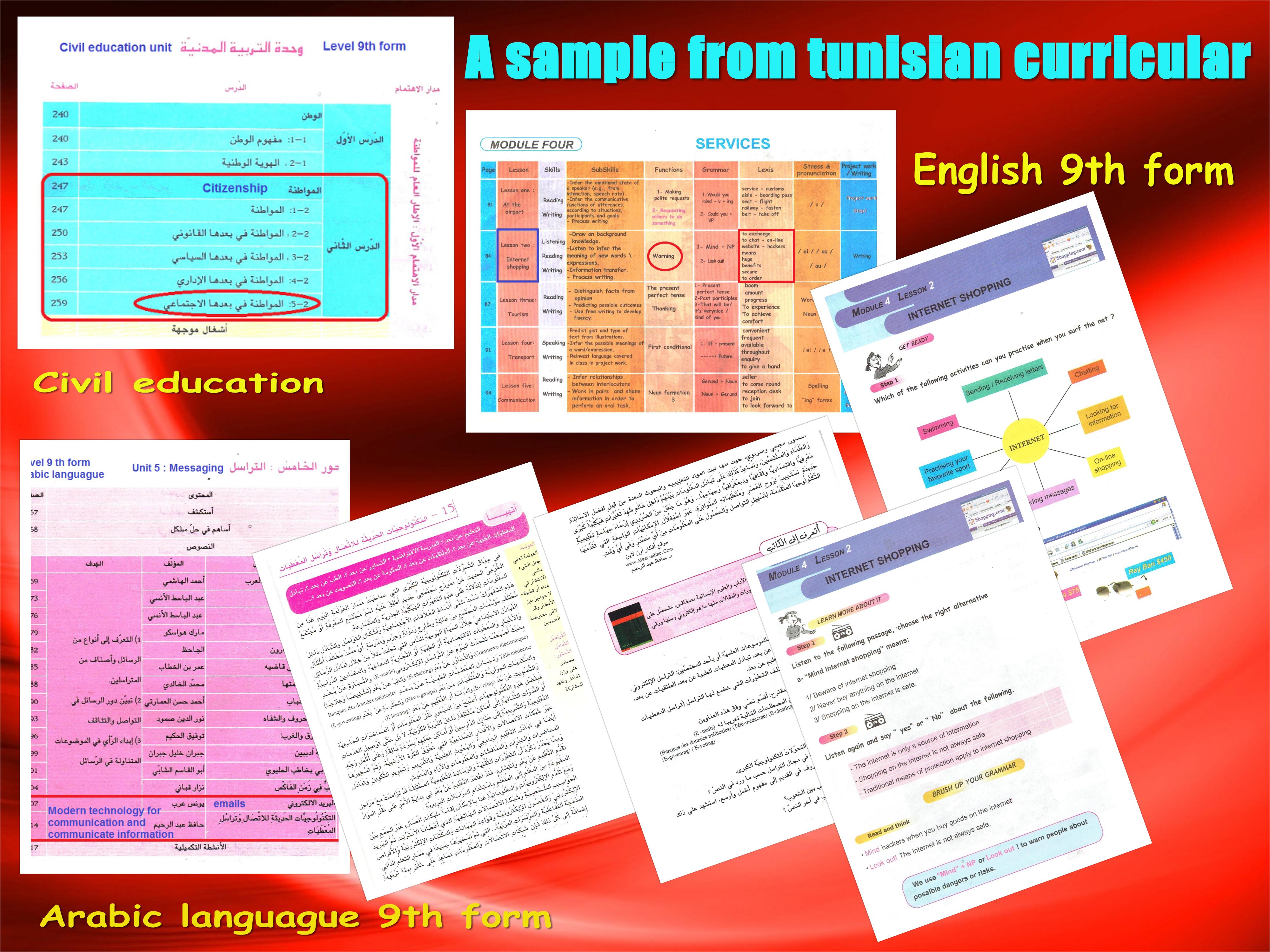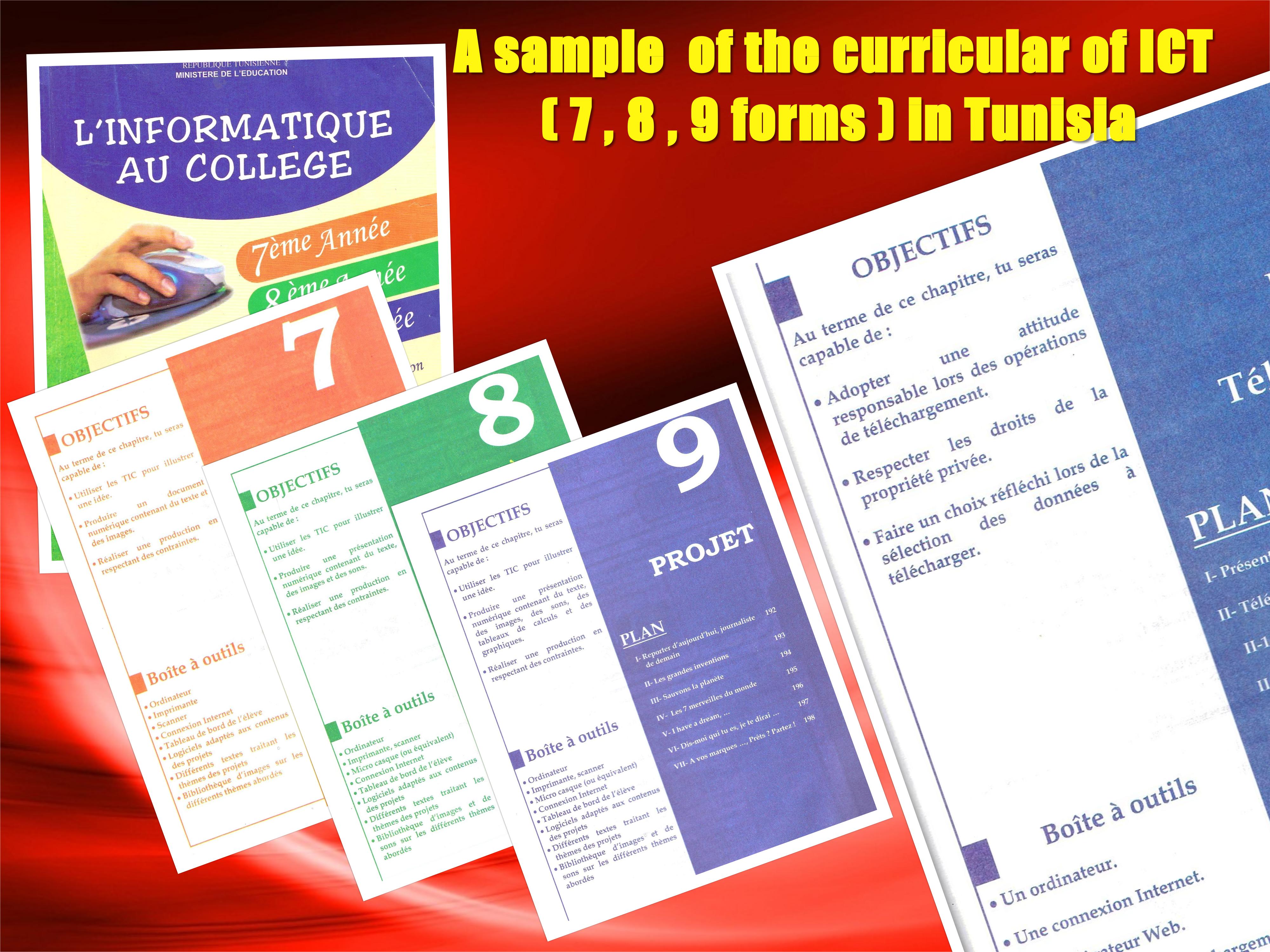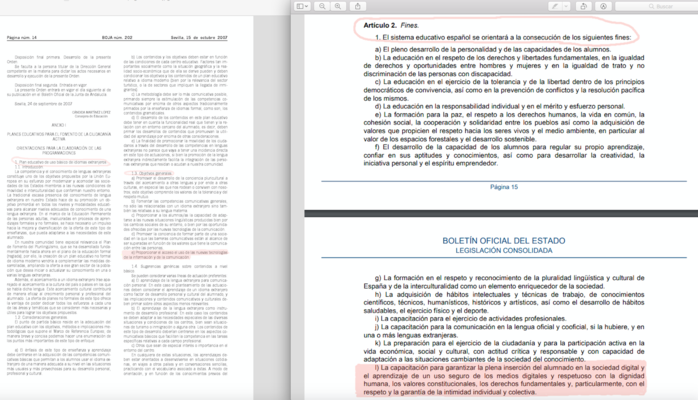Curricular integration is an approach that allowed our students to think about the usefulness of our schools, our programs and the use of knowledge.
Through this project we aimed to make our programs meaningful on the social level by allowing the harmonization of the fundamental concepts of the disciplines to quote the example of the teaching of the citizenship in the civil educations a discipline which facilitated the accessibility the treatment of the concept of digital citizenship in our projectm , especially Netiquettes and how to be a good digital citizen
To add that our students learnt many skills through this project, learn how their curricular is an independent part of this project , how they adapt these notions in their programs directly in this project mentioning the example of the digital citizenship studied in most European programs in other countries with few differences.
In most partners curricular they used the approach by teaching with projects , a matter that facilitates to much the integration of many concepts of our project in their curricular , also in many European countries there are parts of their programs about the digital citizenship , how to cope bullying in our schools in order to stop violence , we see that our project , many of its concepts are integrated in many programs especially those in relation with languages , for example in Tunisia we have a big part of programs about communication where they study the different ways of communication taking internet as an example .
Our students got the chance to share between each other their experiences , discover the culture of each other , make the acquaintance of each other through the webinars or forums or some collaborative applications or tools , so all our students worked together collaboratively for a same purpose .In a word we based a part of our project on gamification an approach too much nowadays used in education through Kahoot, Mentimeter, learningapps ....
We integrated drawings as an approach used in teaching to solve many problems with students, to develop the skills of our students who are interested by drawings.
Another approach was introduced in our project, widely used in teaching, especially in languages and nowadays in sciences was the comic strips, a succefull part in our project , where our students expressed their ideas about internet and created many different stories about e –safety online.
Storytelling was another important widely teaching approach which took a big part our project , allowed our students to express their opinion and points of view in the collaborative walls:padlet and linoit
Knowing that each discipline has its own way of thinking, its own conceptual structures and methods of inquiry, we have presented the uniqueness of each discipline while highlighting the interdependence of these as our students learn better in interdisciplinary links.
Our students thus develop an intellectual ease and come to be able to consider multiple points of view, to practice through collaborative activities, let us mention the cases of storytelling a widely used approach in teaching, to allow students to give their opinion or points of view in the collaborative walls, therefore qualified activities with a broad interdisciplinary perspective and able to link the different disciplines to solve social and technological problems.
Without forgetting the language of our project that helped our students to perform their English, to learn how to write and to speak, so our project was a good opportunity for this purpose.
Creating a supportive learning environment by integrating physical, psychological and social components; arousing in our students interest in relevant and stimulating questions through brainstorming or quizzes and finally developing their autonomy by solving personal, social and educational problems.
The integration approach, aimed at developing self-training, stimulates this process of continuing education, interacting with each other’s and learn in multiple contexts of interaction and developing global, transversal and specific skills.
The integration curricular strengthens citizenship, relationships with others and the world; promote attitudes of openness to other ways of knowing, being and living. It stimulates actions and projects of contact with diversity, in particular languages: education for plurilinguisme and intercultural communication.
Some example of integration cirricular
Tunisia : curricular integration


Spain : curricular integration

Curricular integration.pdf
Translation:
- Provide access to new information and communication technologies.
- . Training to ensure the full insertion of students in the digital society and learning the safe use of digital media and respecting dignity human rights, constitutional values, fundamental rights and, in particular, the respect and the guarantee of individual and collective privacy.